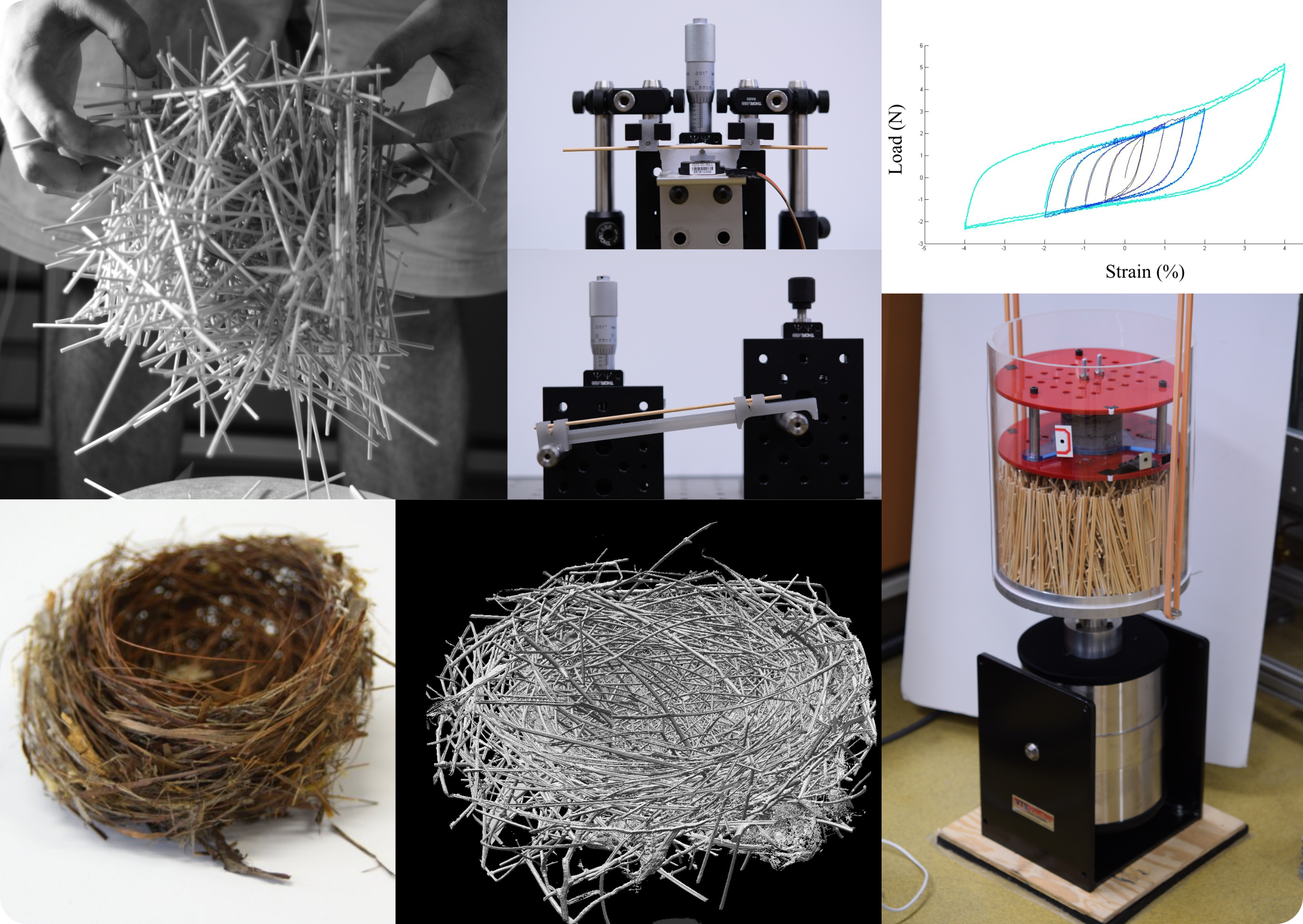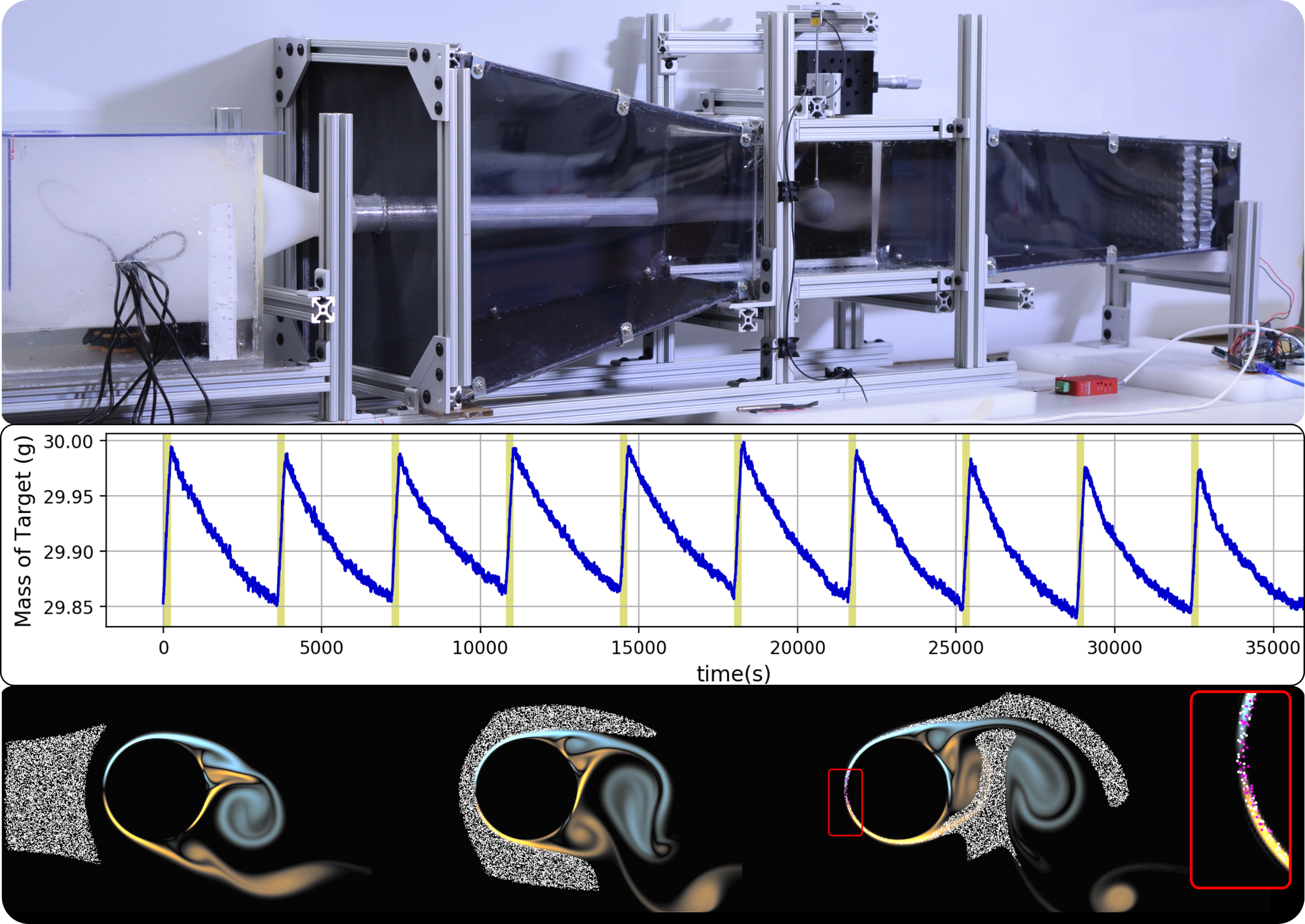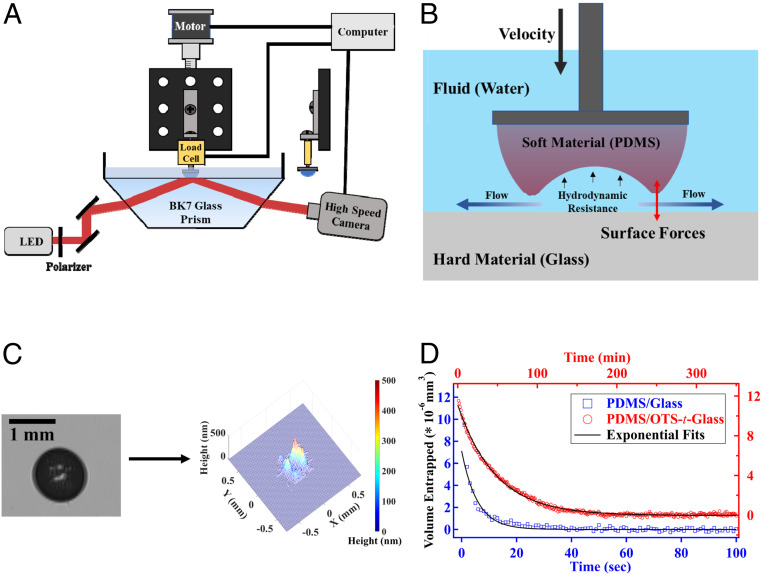Emergent mechanics of a bird nest
A cardinal will use its own body as template in building its cup-nest. Found, filamentous material are added and randomly packed against the bird-defined boundaries. The resulting structure will not be very stiff, but it will reliably hold its shape, enough to protect its valuable contents against various disturbances. This seemingly simple, naturally-selected engineering solution for keeping one’s offspring safe, is instead the result of a subtle interplay between geometry, topology, elasticity, and friction. Using experimental approaches adapted from granular physics, and in close collaboration with simulators at UIUC, we are characterizing the emergent quasi-static and dynamic mechanical behavior of “nest” materials, and their dependence on constituent fiber properties and the distribution of their disordered, impermanent contacts.





